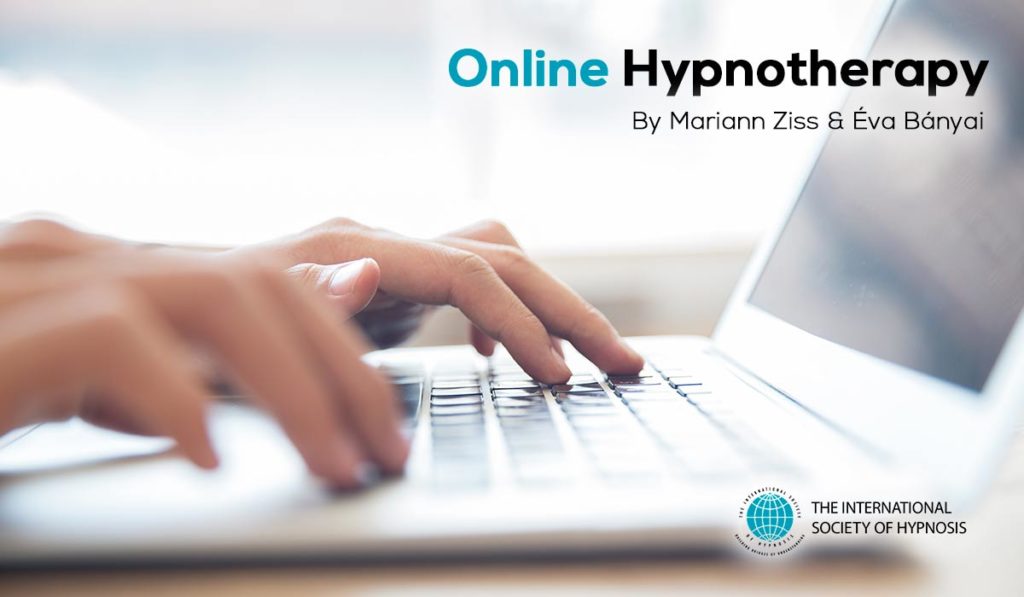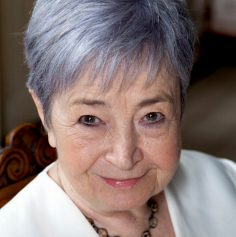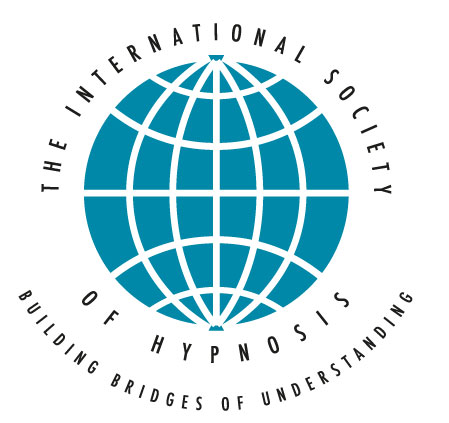

By Mariann Ziss & Éva Bányai
We, hypnotherapists work with altered state of consciousness online as well, just as with in-person hypnotherapy sessions. That it is possible and necessary, many practicing hypnotherapists learned with the recent epidemic. In this new situation we had to realize that we cannot abandon our patients and we have to respond to newly occurring needs for therapy. When we decide to opt for online sessions, we do a risk-benefit analysis: we assess if the online therapy would bring more healing opportunities or more risks. According to our experience the healing, and the development of a relationship can be achieved in the online setting. In the culture of psychotherapy as premises developed, a system of habits accumulated for the psychotherapeutic activity. Now these are questioned and re-written in the crisis of the epidemic. The ivory tower, the sterile isolation of the psychotherapeutic setting is dissolving. The role of the office, as a physical place is lessened and we look closer at the actual conditions of healing. We reconsider what serves the needs of the patient. For instance, it was for long recommended that there will be an initial in-person session before we continue with the online routine. Now it turns out that it is not utterly necessary.
The framework of the therapy must be clarified for the online setting as well. The framework contains the agreement and now, emphatically, the technical details too. The therapist and the patient have to feel comfortable and secure in the space of the online therapy. this might take time, requires care and the attention to the details. It is useful to establish phone contact so that if any technical disruption occurs, the session can be continued. The modification, clarification of all these conditions is ongoing. There is always a detail we didn’t think of before, but makes the online therapeutic connection more fluid. For example, the therapist can change the earphones between sessions to avoid discomfort after many hours of work. Or might start writing with a longer pen to make it visible that she is making notes, not just looking down. The patient might change the place of the therapy or use another device than before.
In her own environment the patient takes more responsibility for herself. The therapist has to give up feeling in charge for the environmental safety of the patient. The current professional discourse shows that releasing this “omnipotence” is not obvious and can impact the depth of the regression the patient experiences. Maneuvering within the new framework and the new setting bares signals for the therapeutic relationship as well, just like in the in-person setting, but now the tools are plentiful to do so. The angel of the camera and the technical conditions hide scenic information. The insight to the private environment of the patient, the quantity and quality of the background image, the appearance of family members and pets are phenomena to take into account. We have to notice the spot chosen by the patient for the therapy.
The use of the camera and the screen creates an alternative space where the emphasis of the body language shifts and the functioning of eye contact changes. Like a prism we get used to. The unseen environment is not necessarily hidden, just might become unimportant. The development of the rapport should fit these processes. The significance of the connection might grow while other environmental details shrink. The patient is in her own medium, no separation is provided. At the same time through the therapy this medium can be subjectively shaped: the support, the exploration, the healing can become part of the environment, giving a new meaning to “cyberspace”. In this online therapeutic field the strong focus on each other connects the therapist and the patient, while the surrounding stimuli are different as they are present in a different reality. We have to comprehend the differences of temperature, noises, smells, if important.
This presence bares features that make the field of connection significant, special, highlighting the therapeutic relationship. If the rapport is well built the rhythm of the session defines the space, superseding other stimuli. The new space narrows the focus of increased attention by watching the screen, going towards an altered state of mind. Several circumstances favor the induction of trance. The core of hypnotherapy is not the deliberate induction of hypnosis, but that the hypnotherapist is able to utilize the characteristics of the altered state of consciousness, mobilizing the affective, cognitive and physiological capacities in a way that would not be possible completely awake. The borders of the altered state of mind are not sharp, its extent is shifting. It occurs in almost every therapeutic relationship, or even while doing sports, watching a movie and when someone is in crisis. The hypnotherapist relies on the potential of these differences.
Hypnotherapy also allows us to explicitly formulate the potential of the online therapeutic field in hypnotic suggestions. To experience the flexibility of the online therapy is a message to mobilize inner resources. This is often pronounced spontaneously by the patient in metaphors. In the same way, fear of the disruption of the internet is common for patients, and therapists as well, at the beginning, but the ability to act in such a case can be also built into the suggestions, just like other circumstances to deepen the experience and the sense of safety. These suggestively put, added control functions can be important elements of the therapeutic hypnosis, pointing beyond the practical use of the added intervention. It should be stated here that such a rupture rarely occurs: nobody we know reported a case when the patient remained in hypnosis in the online therapeutic field alone, without the therapist.
In hypnotherapy the somatic focus is very common. In these cases we aim to relieve pain and side effects, treating autoimmune diseases with hypnotic suggestions. During the COVID-19 epidemic we face an increased need to relieve somatic background diseases to optimize the immune functioning and to ease anxiety. In these therapies the therapist often needs a camera angel that allows her to see the breath of the patient, the muscular and other reactions. This allows the therapist to synchronize the wording and rhythm of interventions with the patient’s reactions and the patient experiences the attentive presence more obviously.
A learning from the recent epidemic is that online hypnotherapy is possible and legitimate. Through the internet we can continue with the practice of hypnotherapy where the online space keeps altering the altered
state of mind.
Éva I. Bányai
 Éva I. Bányai, PhD, is a Professor Emeritus of Psychology at the Department of Affective Psychology, Institute of Psychology, Eötvös Loránd University (ELTE), Budapest, Hungary. After earning her doctorate in psychology at ELTE in 1973, she spent a fellowship year with E. R. Hilgard at Stanford University where she developed active-alert hypnosis. Her main research interest is studying the psychophysiological, behavioural, phenomenological, and social aspects of hypnosis from an interactional standpoint. Recently, she has been involved in developing new hypnotherapeutic methods for healing cancer patients, and to conduct research on the effect of hypnosis on treating high risk breast cancer patients. She has been heavily engaged in teaching hypnosis research and hypnotherapeutical methods to researchers and clinicians both in Hungary and abroad. She is a Past President and a Honorary Lifetime Member of both the European Society of Hypnosis (ESH) and of the International Society of Hypnosis (ISH). She is founding secretary, a Past President and Honorary President of the Hungarian Association of Hypnosis, is a Past President of the Hungarian Psychological Association, and a Honorary Fellow of the American Society of Clinical Hypnosis. She is the recipient of numerous awards for her contributions in advancing the fields of hypnosis, including the Hungarian Order of Merit, Officer’s Cross, the International “Franco Granone” Award of the Centro Italiano di Ipnosi Clinico-Sperimentale (CIICS), Torino, the Benjamin Franklin Gold Medal of ISH, and the Living Human Treasure Award of the Society for Clinical and Experimental Hypnosis (SCEH).
Éva I. Bányai, PhD, is a Professor Emeritus of Psychology at the Department of Affective Psychology, Institute of Psychology, Eötvös Loránd University (ELTE), Budapest, Hungary. After earning her doctorate in psychology at ELTE in 1973, she spent a fellowship year with E. R. Hilgard at Stanford University where she developed active-alert hypnosis. Her main research interest is studying the psychophysiological, behavioural, phenomenological, and social aspects of hypnosis from an interactional standpoint. Recently, she has been involved in developing new hypnotherapeutic methods for healing cancer patients, and to conduct research on the effect of hypnosis on treating high risk breast cancer patients. She has been heavily engaged in teaching hypnosis research and hypnotherapeutical methods to researchers and clinicians both in Hungary and abroad. She is a Past President and a Honorary Lifetime Member of both the European Society of Hypnosis (ESH) and of the International Society of Hypnosis (ISH). She is founding secretary, a Past President and Honorary President of the Hungarian Association of Hypnosis, is a Past President of the Hungarian Psychological Association, and a Honorary Fellow of the American Society of Clinical Hypnosis. She is the recipient of numerous awards for her contributions in advancing the fields of hypnosis, including the Hungarian Order of Merit, Officer’s Cross, the International “Franco Granone” Award of the Centro Italiano di Ipnosi Clinico-Sperimentale (CIICS), Torino, the Benjamin Franklin Gold Medal of ISH, and the Living Human Treasure Award of the Society for Clinical and Experimental Hypnosis (SCEH).
 Mariann Ziss
Mariann Ziss
Mariann Ziss is a clinical psychologist and hypnotherapist. She worked with hypnotherapy in a gyneacology-obstetrics department and in her private practice. She is a doctoral student, analysing anticipatory trauma in the framework of altered state of consciousness. She is a member of the board of the Hungarian Hypnosis Association.
